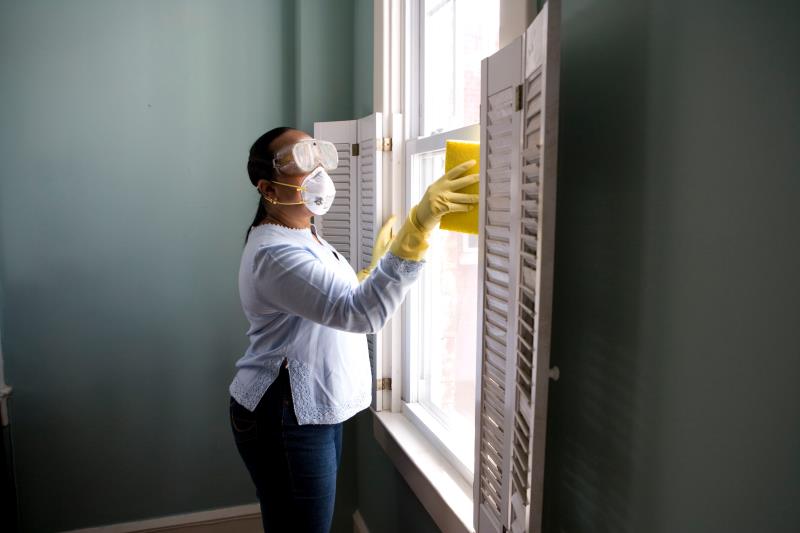 (Photo credit: CDC/Unsplash)
(Photo credit: CDC/Unsplash)SARS-CoV-2 may remain in aerosols over 3 hours after exposure, and on surfaces up to 3 days, making it similar to SARS-CoV-1 in environmental stability, according to a new study.
An investigation by a team under the US National Institute of Allergy and Infectious Diseases (NIAID) found that viable SARS-CoV-2 particles could be detected in aerosols up to 3 hours post-aerosolization, and up to 4 hours on copper, up to 24 hours on cardboard, and up to 2-3 days on plastic and stainless steel surfaces after exposure. [medRxiv 2020; doi:10.1101/2020.03.09.20033217]
“Our results indicate that aerosol and fomite transmission of HCoV-19* is plausible,” said the researchers.
However, study leader Neeltje van Doremalen was careful to stress that the study—currently in preprint and pending peer review—did not prove anyone had been infected by breathing aerosolized particles or touching contaminated surfaces.
“Important: we experimentally generated aerosols and kept them afloat in a drum. This is not evidence of aerosol transmission,” said van Doremalen in a Twitter post on 11 March. [https://twitter.com/DrNeeltje/status/1237743987890343938]
The study compared one strain of SARS-CoV-2 and one of SARS-CoV-1 at similar infectious titres under controlled laboratory conditions that were significant to healthcare settings. Aerosols were tested as they are produced by certain medical procedures, while the four surface types were those commonly found in hospitals.
To test viral viability in aerosols, the researchers nebulized both strains and maintained them using a Goldberg drum (21–23°C, relative humidity 65 percent), from which samples were collected by gelatin filters after 0, 30, 60, 120, and 180 minutes.
They detected viable SARS-CoV-2 particles in aerosol up to the 180-minute mark, though concentration was reduced (infectious titre 103.5 to 102.7 TCID50/mL**). A similar reduction was observed in the SARS-CoV-1 strain (104.3 to 103.5 TCID50/mL).
For surface viability, 50 μl of 105 TCID50/mL of both strains were applied to polypropylene, cardboard, stainless steel, and copper surfaces, with samples taken after 1, 4, 8, 24, 48, 72, and 96 hours (21–23°C, relative humidity 40 percent).
On polypropylene, both viruses were detectable up to 72 hours, though with greatly reduced virus titre (SARS-CoV-2, 103.7 to 100.6 TCID50/mL; SARS-CoV-1, 103.4 to 100.7 TCID50/mL). On stainless steel, similar kinetics were observed in both, though the virus was only detectable up to 48 hours (SARS-CoV-2, 103.7 to 100.6 TCID50/mL; SARS-CoV-1, 103.6 to 100.6 TCID50/mL).
No viable virus was detectable after 4 hours on copper for SARS-CoV-2 and 8 hours for SARS-CoV-1, and after 24 hours on cardboard for SARS-CoV-2 and 8 hours for SARS-CoV-1.
At the 96-hour mark, no detectable levels of virus were found on any of the four surfaces.
All viability tests were repeated three times, with results reflecting the mean data. Decay rates were estimated using a Bayesian regression model.
In their discussion, the researchers noted that given how similar the environmental viabilities of the two viruses were, the greater transmissibility of SARS-CoV-2 was likely due to other factors such as pre-symptomatic or asymptomatic viral shedding, the infectious dose needed to establish infections, and variations in temperature and humidity.